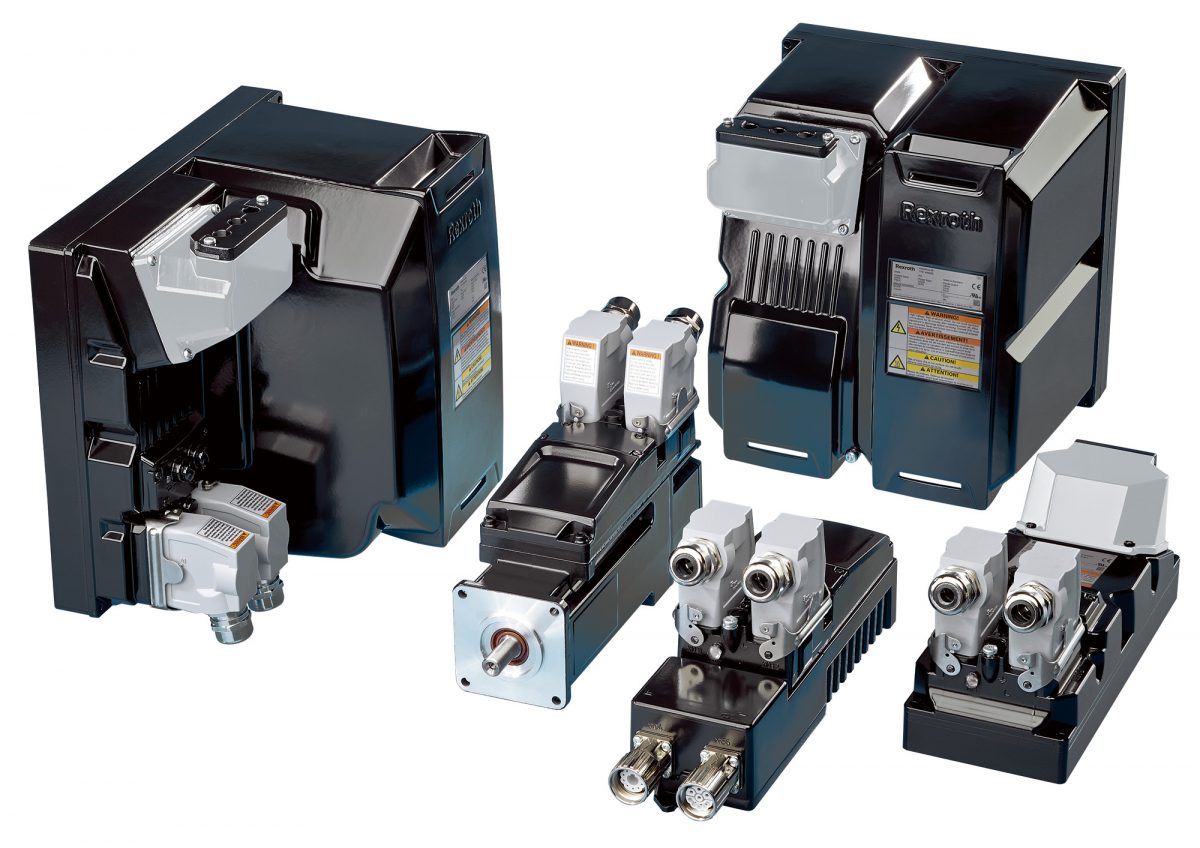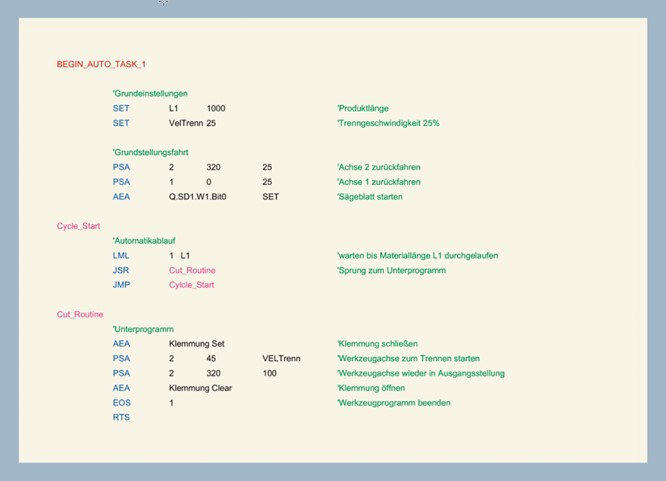Guest contributor: Andreas Gryglewski, Bosch Rexroth
The market for handling and robotic solutions is highly price-driven, yet still leaves room for disruptive ideas. Bosch Rexroth provides proof of this with an advanced solution package for Cartesian kinematics. It combines an economical industrial controller with state-of-the-art web technology and assured instruction via a standard tablet. The result: minimum investment costs and maximum efficiency – before and during operation.
Manufacturers of handling solutions for loading and unloading face fierce competition. The volume market demands cost-optimized, rugged and user-friendly solutions that optimally fulfill all requirements in terms of accuracy and cycle times. In addition, users expect quick commissioning with as little programming, instruction and training expenditures as possible. A high degree of productivity and flexibility is also required for the operational phase in order to reduce downtime and so that format or process changes can be more quickly implemented.
All of these requirements are addressed by Bosch Rexroth with a particularly economical solution package for Cartesian kinematics that combines a high-performance motion controller with state-of-the-art web technologies and innovative value-added features. The automation experts make the solution package even more economical with an especially clever idea: users can perform the setup and assured teaching-in on any standard commercially available tablet.
Industrial control, web technology, consumer tablets

In its solution package for Cartesian kinematics, Bosch Rexroth combines a powerful motion controller with modern web technologies and innovative value-added features.
The disruptive solution approach for Cartesian handling from Bosch Rexroth is particularly suitable for machinery manufacturers and end users who want to implement flexibly and reliably adaptable pick-and-place tasks in a short time and at a low cost. Examples include the loading and unloading of injection-molded parts, the sorting of workpieces, or a wide range of intralogistics applications. Bosch Rexroth combines its proven industrial controller with a webserver and a bracket for a typical standard tablet, by means of which the user can visualize the connected handling solution and – graphically-supported – program, teach-in and adjust it as needed. The solution package is comprised of other basic components such as compact servo motors and drives for the kinematics movement, as well as a safety controller for connecting to the tablet bracket for safe teaching-in. From a single source, Bosch Rexroth also optionally offers the mechanical equipment, includinglinear axes with a belt or ball-screw drive and grabbers.
The utmost in connectivity and IT security
In its new handling solution, Bosch Rexroth placed special emphasis on the two key properties of i4.0 –connectivity and IT security. While the optional IoT Gateway ensures the horizontal and vertical networking, the security router with a newly developed IoT firewall, which is also optional, guarantees secure communication between the tablet and controller. Consequently, unauthorized persons can neither log into the controller nor can a virus attack the controller or spread throughout a company’s IT network.

Thanks to the newly developed solution packages, handling systems from Bosch Rexroth can be more quickly commissioned, easily programmed, and taught most economically using standard tablets.
Easy commissioning without parameterization
One of the numerous unique features is the operating concept for the handling solution: Immediately after a servo motor is connected with a drive, the latter reads out the stored parameter set from the feedback memory and thus already has all the characteristic data of the mechanical equipment. The result: a considerable time savings and prevention of errors during commissioning, because the user no longer has to manually enter up to 70 parameters. When Rexroth mechanical equipment is ordered in the future, the parameters will be stored in the feedback memory of the motor while still in the plant. If the user puts his own mechanical equipment into operation; the associated parameter file can also be stored in the feedback memory and is efficiently read into the drive upon connecting.
Safe teaching-in using a standard tablet
The disruptive character of the new handling solution becomes clear during setup, which can be performed wirelessly with almost any consumer tablet. It is expeditiously fastened in a bracket especially developed by Bosch Rexroth for teaching-in, which can be adjusted to the respective size and securely encloses the mobile device. On the top left is a combination emergency stop and enabling button that makes reliable and comfortable teaching-in possible for the user. While the left hand holds the tablet and can press the red button, the right hand is free for other operational tasks. The visualization and operation of the handling system is web-based and applies the HTML5 standard, hence is independent of the tablet OS. An optional security router with an integrated firewall provides for IT security.
Programming without programming knowledge
Bosch Rexroth also made the process programming, which precedes the teaching-in sequence, as uncomplicated as possible. Because it uses the graphical programming language Google Blockly, as is the case with the tablet, no programming skills in conventional terms are required. In order to move an axis from point A to point B, for example, only the start and end positions need to be specified, and a line to connect them with each other. The grabbers are also opened or closed by means of graphical elements. Thanks to variables, logical expressions and loops, it is possible to easily specify and clearly represent various processes, also complex ones if necessary.
Features for increasing productivity and quality
Positively contributing to the performance of an especially economical operating phase of the new handling solution are its versatile functions and expansion options. These ultimately also afford the user a high degree of flexibility for changes in process or format. For example, the “Active vibration damping” function, which provides greater product quality in combination with a sensor, or initiates the exact countermovements in the open-loop process in the linear module in order to prevent undesirable vibrations or to move sensitive products. Thus, for instance, the utmost in accuracy can be achieved when loading and unloading using the grabber sparing the mechanical equipment for a longer service life.
Preventive maintenance and IoT integration
Preventive maintenance can also be cost-efficiently realized in combined usage with the optional IoT Gateway. In order to collect data for analysis and evaluation of the service life, the motor decoder can also be used as an intelligent sensor. If the motor revolutions are converted into linear movements, the timing for lubrication intervals or the replacement of components can be derived, for example. Communication standards such as OPC UA can provide for easy integration into customer-specific IoT systems as needed.
Economical in every way

The solution package is especially suited for pick-and-place tasks that must be quickly and flexibly adaptable – such as for the loading and unloading of injection-molded parts, the sorting of workpieces, or for various intralogistics applications.
With the new solution package, Bosch Rexroth introduces a fresh impetus into the competitive market for Cartesian handling. Automation expertise, modern web and IoT technologies, and productivity-enhancing features are combined in a rugged and practical solution concept that takes into account current and future market requirements, and which generates disruptive energy. Consequently, machinery manufacturers and end users find quick and very economical way to implement a reliable, efficient and flexible handling solution that can be commissioned, taught, and adapted to current requirements without any significant knowledge of programming and parameterization.
Innovative approaches of the new handling system:
- A comprehensive economic package comprising industrial controller, servo motor, drives, security zone module and teaching-in bracket for consumer tablets
- Maximum security through a router with firewall (optional)
- Minimal total cost of ownership thanks to:
- Commissioning without the need for parameterization: Drives automatically read stored mechanical parameters when connected with a motor
- Device-independent visualization and operation (HTML5)
- Safe teaching-in bracket for consumer tablets
- Simplified process flow design without programming knowledge, thanks to Google Blockly
- Added value functions for productivity and quality – for example vibration absorption
- Prepared for data tracking for preventive maintenance
- Easy integration into IoT systems through open interfaces such as OPC UA

CMA/Flodyne/Hydradyne is an authorized Bosch Rexroth distributor in Illinois, Wisconsin, Iowa and Northern Indiana.
In addition to distribution, we design and fabricate complete engineered systems, including hydraulic power units, electrical control panels, pneumatic panels & aluminum framing. Our advanced components and system solutions are found in a wide variety of industrial applications such as wind energy, solar energy, process control and more.

 It is not a surprise that optimizing yield is one of the most important objectives in a sawmill (or
It is not a surprise that optimizing yield is one of the most important objectives in a sawmill (or 







































